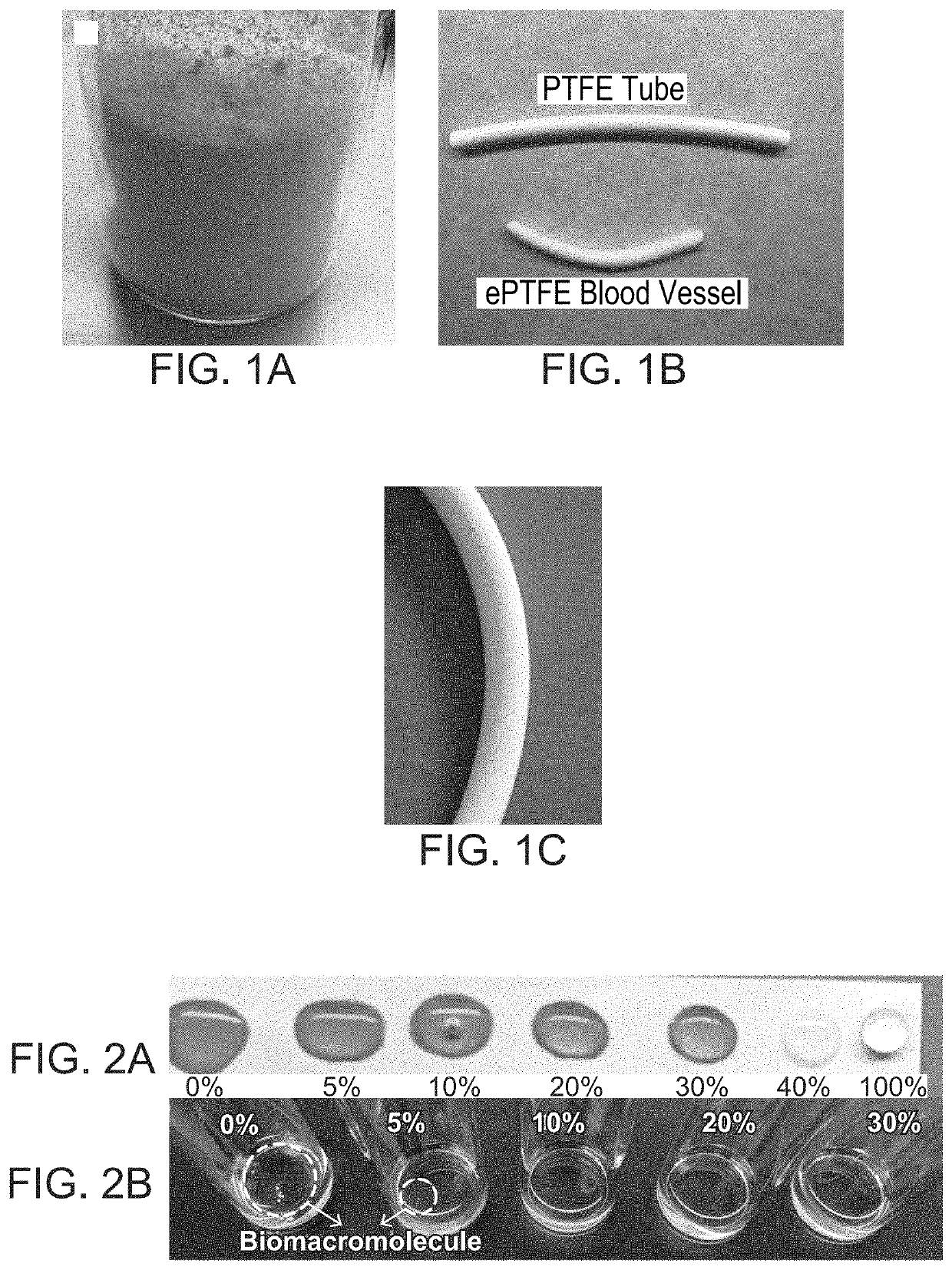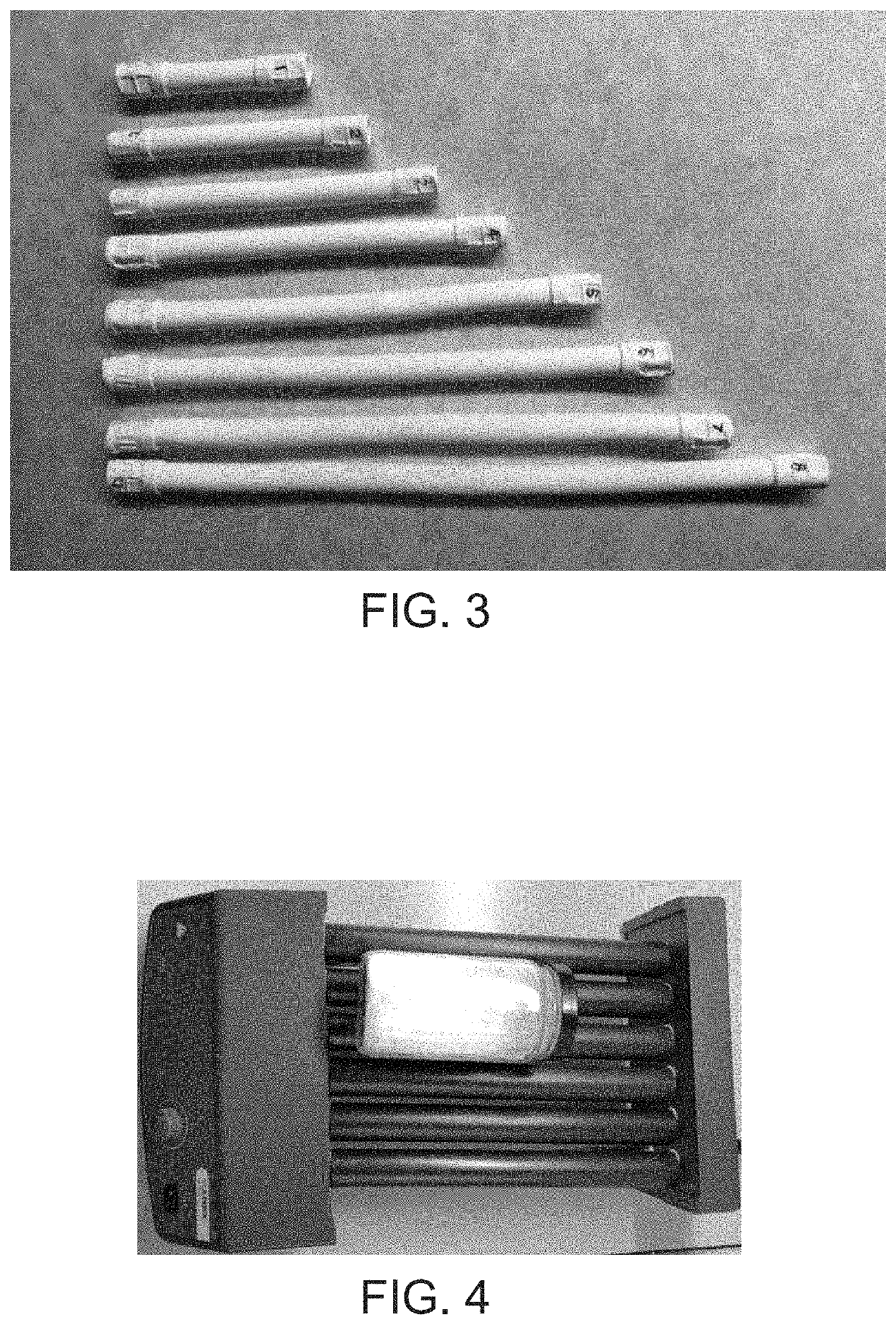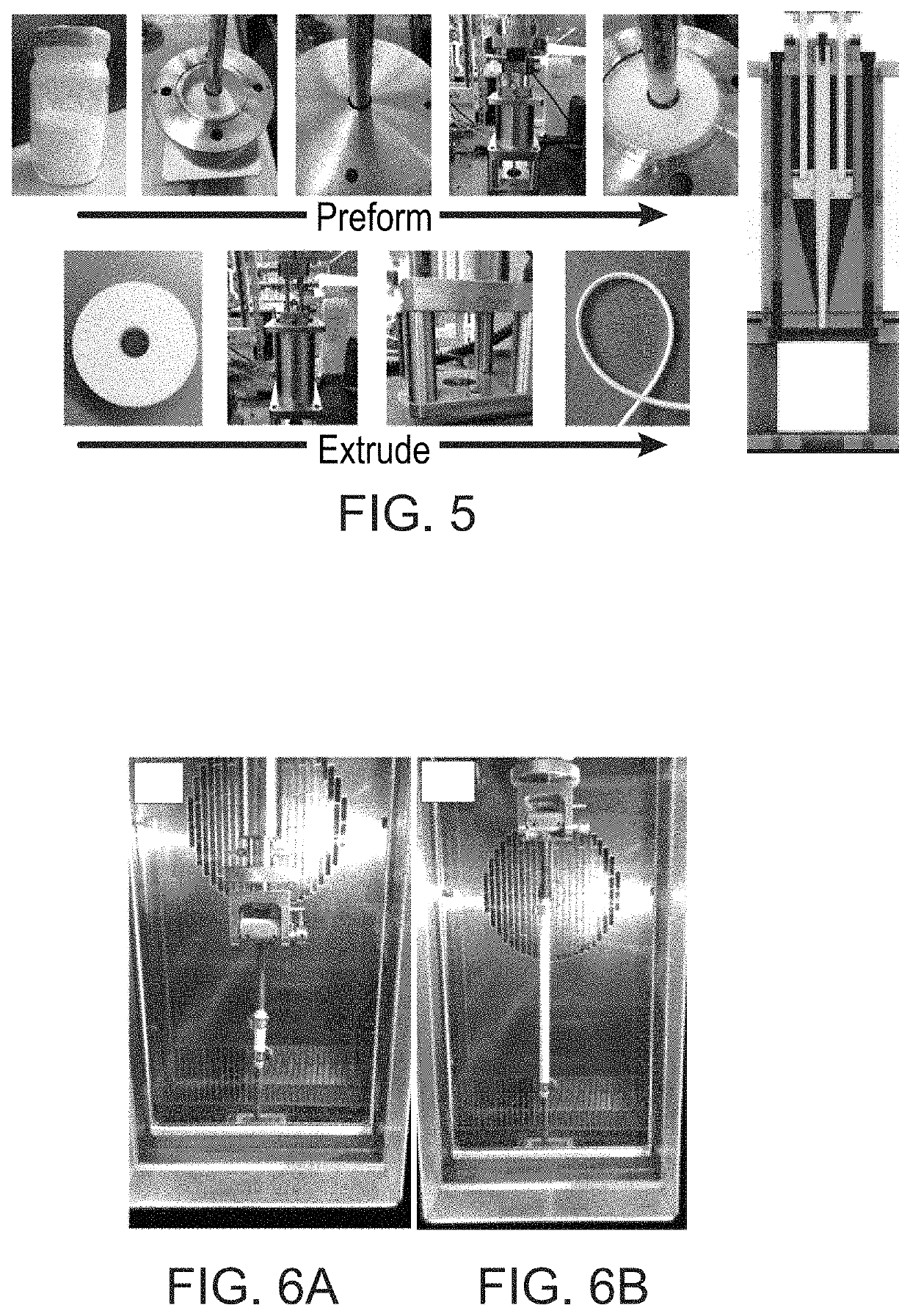Green fabrication of polytetrafluoroethylene and expanded polytetrafluoroethylene and uses thereof
a technology of polytetrafluoroethylene and polytetrafluoroethylene, which is applied in the field of green fabrication of polytetrafluoroethylene and expanded polytetrafluoroethylene, can solve the problems of material contamination, material safety hazards, and material evaporation that requires special handling, so as to enhance the safety and utility of ptfe and eliminate serious drawbacks and safety concerns
- Summary
- Abstract
- Description
- Claims
- Application Information
AI Technical Summary
Benefits of technology
Problems solved by technology
Method used
Image
Examples
example 1
[0063]In this Example, a PTFE tube was fabricated using the process of the present disclosure.
[0064]80 grams of PTFE powders (F301 from Daikin) were blended with 20 grams of ethanol in a glass bottle. Roll the bottle at room temperature for 30 minutes at a speed of 10 rpm (shown in FIG. 4). The blends were then placed in an oven for 1 hour at 40° C.
[0065]The aged blends were loaded into a barrel to make a preform using a pressure of 2 MPa (shown in FIG. 5 at “Preform”). When the pressure reached 2 MPa, it was maintained for 10 minutes. All the temperatures were room temperature unless otherwise specified. After being released from the barrel, the billet was extruded into a 6 mm I.D. and 8 mm O.D. tube using the ram extruder having a reduction ratio of about 100:1 in cross sectional area from billet to the extruded tube, which was shown in FIG. 5 at “Extruding”. The geometry of the ram extruder is also shown in FIG. 5.
[0066]The as extruded tube then was sintered at 380° C. for 2 minu...
example 2
[0067]In this Example, an ePTFE tube was fabricated using the process of the present disclosure.
[0068]The PTFE tube used in this Example was made following the procedures described above in Example 1, except that the tube was pre-sintered. Before expansion, the tube was placed in the oven for 5 minutes at 100° C. for complete ethanol evaporation, which is shown in FIGS. 6A & 6B. Then the tube was stretched 8 times longer at 200° C. with a stretching rate of 1000 mm / min, which is shown in FIG. 6B. After the expansion, the stretched tube was heated up to 380° C. for 40 seconds.
example 3
[0069]In this Example, an ePTFE tube was fabricated with the addition of biomolecules using the process of the present disclosure.
[0070]The organic solvent used in this Example was an ethanol / water mixture having a water ratio of 30% by weight mixture; that is an ethanol / water ratio of 70:30. Before blending with PTFE powders, 0.5% by weight of dopamine was dissolved in the ethanol / water mixture. The tubing process was the same as described above for Examples 1 & 2.
[0071]Evaporation of ethanol was done at room temperature through venting for 24 hours. Expansion was conducted at 40° C. instead of 200° C. These variations were to keep biomolecules from being inactive or degrading. Beyond dopamine, heparin and other cell growth factors could also be added in PTFE / ePTFE products, which will confer diverse functions on the final tube products.
PUM
| Property | Measurement | Unit |
|---|---|---|
| pressure | aaaaa | aaaaa |
| temperature | aaaaa | aaaaa |
| temperature | aaaaa | aaaaa |
Abstract
Description
Claims
Application Information
 Login to View More
Login to View More - R&D
- Intellectual Property
- Life Sciences
- Materials
- Tech Scout
- Unparalleled Data Quality
- Higher Quality Content
- 60% Fewer Hallucinations
Browse by: Latest US Patents, China's latest patents, Technical Efficacy Thesaurus, Application Domain, Technology Topic, Popular Technical Reports.
© 2025 PatSnap. All rights reserved.Legal|Privacy policy|Modern Slavery Act Transparency Statement|Sitemap|About US| Contact US: help@patsnap.com



